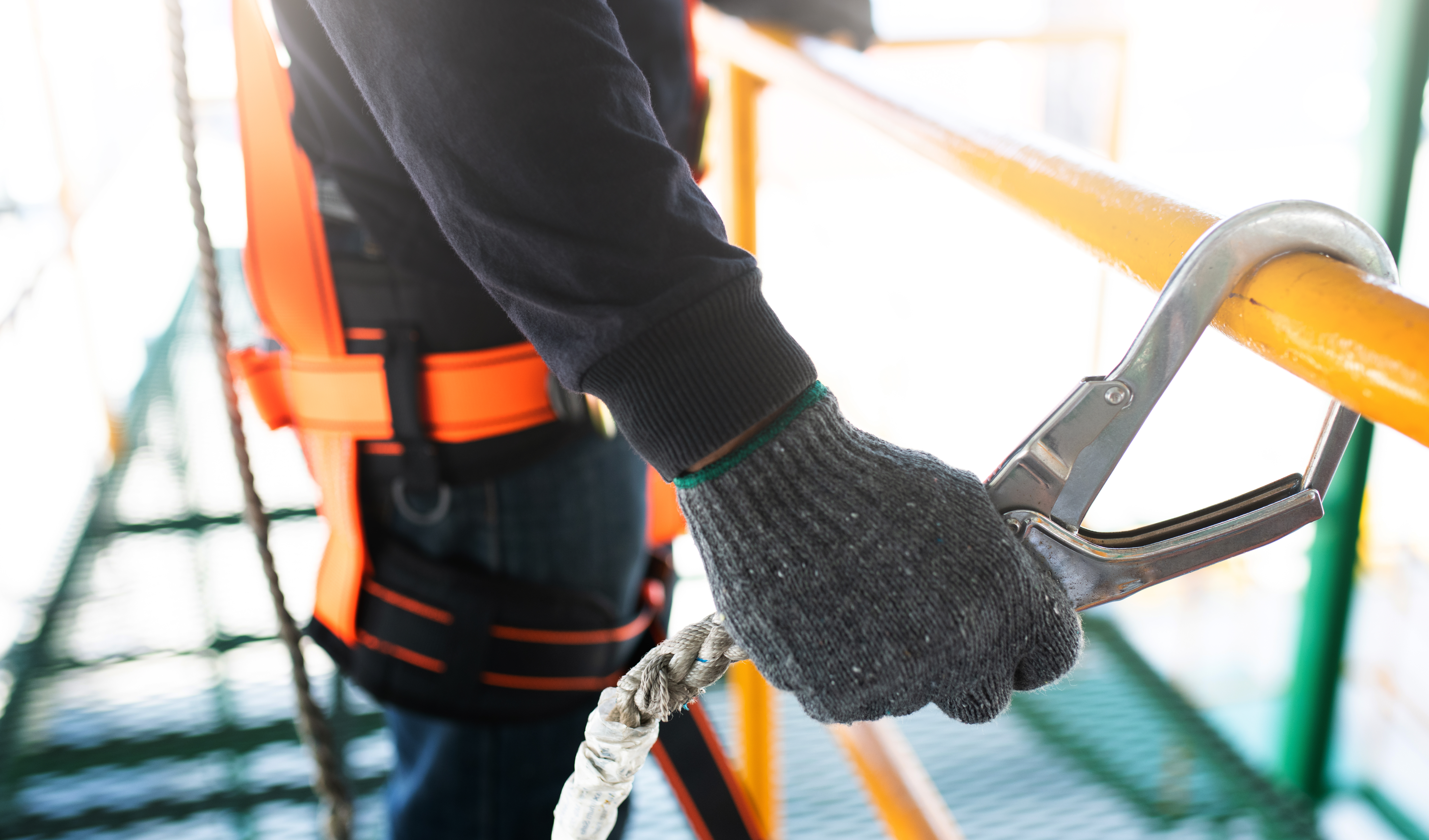
National Safety Stand Down to Prevent Falls
National Safety Stand-Down to Prevent Falls in Construction 2021 is May 3rd through 7th. Fatalities caused by falls from elevation continue to rise and be the leading cause of death for construction employees - 1,061 construction fatalities recorded in 2019... and those deaths were preventable.
The Stand-Down was originally conceived by OSHA in 2014 as part of the National Campaign to Prevent Falls in Construction to raise awareness surrounding the severity of fall hazards in construction and the importance of preventing them. In a construction setting, the term "safety stand-down" is used to describe a wide variety of activities where normal work is paused and the entire site focuses on a particular safety issue. While some employers may use stand-downs to call attention to specific hazards present on their site as an intervention, the Campaign has adopted the use of the stand-down to draw attention to fall hazards in a nationwide week-long event. It's an opportunity for employers to pause work and have a conversation with workers about fall hazards, protective methods, and the company's safety policies, goals, and expectations. This is also an opportunity for workers to talk to management about fall hazards they see!
When working from heights, employers must plan projects to ensure that the job is done safely. Workers who are six feet or more above lower levels are at risk for serious injury or death if they should fall. To protect your staff and keep up with OSHA regulations, it's important to know the basics of fall protection.
When do you need fall protection?
If your employees are working on elevated workstations, overhead platforms, or in confined spaces, they need to have the right fall protection systems. Specific job sites also require additional means for fall prevention such as safety harnesses and lifelines. In most situations, an elevation of four feet or more necessitates fall protection.
To help prevent falls, OSHA requires employers to:
- Guard every floor hole into which someone could accidentally walk by using the railing, toe-board, or a floor hole cover.
- Provide a guard rail and toe-board around every elevated open-sided platform, floor, and runway.
- Provide guard rails and toe-boards, regardless of height, if there is a risk of someone falling into dangerous machines/equipment.
Fall Protection Systems
A common fall arrest system includes an anchor, harness, and connectors (such as a self-retracting lifeline). These systems are designed to lock if a worker falls, preventing them from hitting the ground and becoming injured. Let's look at the individual fall protection equipment:
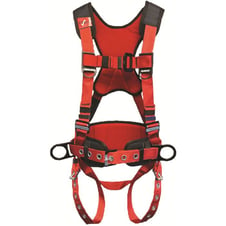
Harnesses
- When you are selecting your harness, it is important that you choose one designed specifically for the work that needs to be done, as well as the anchorage point. For example, an electrical installation needs a combination of fall arrest and positioning, such as a 5 point harness with waist connectors. Our Ritz Safety Lightweight Construction Harness has 3-D rings, 5-point adjustability, 5" rear D-ring extension for extra attachments, dual chest lanyard keepers, and black coated side D-rings. This specific safety harness is ideal for industries such as construction, mining, general industrial, oil & gas, transportation, and utilities.
- It's also important that your harnesses are in good working condition and that you examine your workers harnesses no more than every 12 months. They should also be subject to pre-use checks, interim inspections, and detailed periodic inspections.
Self-Retracting Lifelines
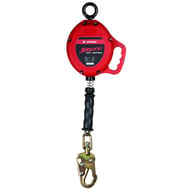
- SRLs provide a lower risk of injuries or hitting the ground rather than a KStrong® BRUTE™ 20 ft. Cable SRL has a robust & durable plastic casing, swivel anchorage eye, steel swivel hook, and a galvanized steel wire rope. standard lanyard. SRLs react to a fall when the line accelerates out of the housing at a certain velocity, generally about 4.5 per second. Our KStrong® BRUTE™ 20 ft. Cable SRL has a robust & durable plastic casing, swivel anchorage eye, steel swivel hook, and a galvanized steel wire rope.
Tool Tethers & Attachments
- Tethering tools are one of the most effective ways to prevent falling object injuries. Every year, according to the Bureau of Labor Statistics, more than 50,000 people are struck by objects on the job. Being struck by tools is the number 2 most common nonfatal injury. Tethering tools to your employees and guardrail systems are essential for protecting them from potential risks. Our Ergodyne®'s Power Tool Tethering Kit is perfect for those in construction. telecommunications, oil & gas, power generation, utilities, wind energy, manufacturing or other jobs at heights.
Lanyards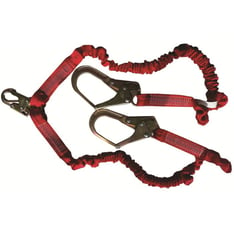
- Lanyards are designed to reduce the impact of a fall and are a vital link to their fall protection anchor point. There are many features to the different kinds of lanyards; make sure your employees are using the proper lanyard for their specific job. The Ritz Safety Double Leg Lanyard features a built-in woven inner core that smoothly expands to reduce fall arrest forces, while the outer jacket serves as a backup web lanyard. This lanyard is ideal for industries such as construction, mining, gas & oil, transportation, utilities, and wind energy.
Anchorage Connectors
- Due to the complexity of anchorage connectors, safety professionals and users need to take steps to confirm that the anchorage point selected is strong enough to safely arrest a fall and allow a worker to avoid injury if they were to fall. Typically, the anchorage connector itself must have a strength of 5,000 lbs. It is also important to know the use of each anchorage connector. For example, some anchors can screw into soil or metal decking, while others can wrap around trees. These different circumstances leave these connectors open to misuse if workers do not understand the intentions of the individual anchorage connector. Our Parapet Anchor is designed to provide a single worker with a portable, temporary anchorage point. It features two, screw bolt anchors each with a soft inner flange that ensures the parapet/facade is not damaged. It is also adjustable, which makes it versatile enough to use on structures with widths of 2.5" - 14". This is an ideal anchor for construction, general industrial, mining, and oil & gas.
Rope and Rope Grabs
- A rope grab is a consistent fall protection item; arresting falls, slides, and any other sort of uncontrollable falls. However, rope grabs need to be used in combination with a lifeline, lanyard or connector, and body support to effectively restrain the user from reaching a hazard. Our Petzl Asap Lock Mobile Fall Arrester can be utilized on a vertical or angled rope and locks when grabbed during a fall.
Horizontal Lifelines
- Horizontal lifelines can offer fall protection coverage across a wide distance and can be one of the most important fall protection items for your employees. They are common fall protection solutions in work areas that lack existing anchor points for personnel tie-off. They can be positioned at the base of the structure (e.g., a roof), overhead (e.g., a gallows style system), or somewhere in-between these points (e.g., a crane rail application). HLLs can limit the amount of force that is transferred both to the worker and the fall arrest system. The Horizontal Lifeline 100ft Four Man is an ideal application for construction, transportation, oil & gas, general industry, wind energy, or utilities. It features 100' of 5/8" kernmantle rope with protective sleeve-covered stop-knot, a ball bearing connector, and more.
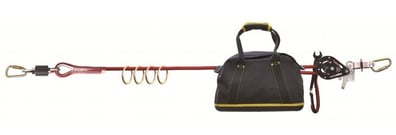
Here at Ritz Safety, we provide our customers with even more Fall Protection items to choose from:
- Vertical and Ladder Safety Systems
- Leading Edge Safety
- Safety Netting
- Fall Protection Kits
- Carabiners
- Rescue & Descent Devices
Why is Fall Protection Critical for Safety & Success?
- Legal Reasons: Employers must provide appropriate PPE and training for their employees.
- Personal Safety: Employees who feel safe as they go about their work will be more productive. Accidents can cause injury, pain and in some cases death - so making personal safety a clear priority will have a positive impact on your employees.
- Business Success: High-quality job performances reduce costs and increase profitability. A company with a good reputation for meeting or exceeding OSHA and CSA safety standards is likely to receive more business.
- Litigation and Insurance Reasons: OSHA cites fall protection as being the most common workplace safety violation. In 2015, Liberty Mutual stated that workplace falls, slips and trips cost $12.59 billion in workers' compensation costs. Past Insurance claims have a direct impact on future insurance premiums.
Stop Falls. Stand-Down.
Want to know more about National Safety Stand-Down?
- Visit osha.gov
- Talk To A Ritz Safety Expert